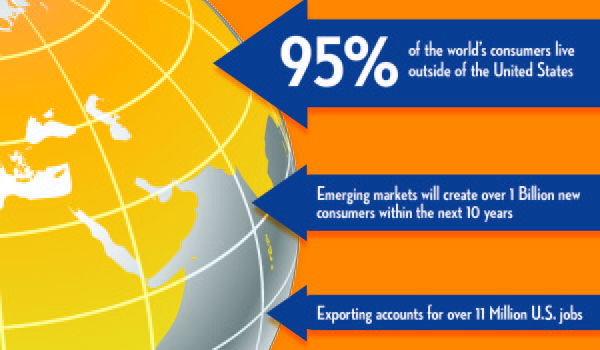

September 25, 2014
I spoke at the Global Supply Chain Council’s Sourcing Shift Conference in Shanghai last week. The audience was a mix of C-level executives and very senior sourcing people. These folks have been running international sourcing and manufacturing operations throughout China and across Asia for many years. They are savvy business people with amazing international experience.
So I was astonished that almost no one in the crowd had heard about America’s Reshoring movement. A 2014 Boston Consulting Group report says that 52% of American corporations over $1billion in revenue are considering Reshoring. And with Walmart’s new pledge to spend $250 billion on U.S.-made goods over the next 10 years, Reshoring is all over the news.
We listened to various speakers talking about the shift of manufacturing from China to even lower cost countries including Indonesia, Vietnam, Myanmar and Bangladesh. The cost per hour comparisons were remarkable. They quoted “cut and sew” and assembly operations in Myanmar at $.35/hour and Bangladesh at $.33/hour. Yes, you read that right…thirty-three cents per hour. These sourcing folks and the multinationals they represent are still chasing the lowest labor cost to produce their products.
Then it was turn to talk about how Reshoring will affect China and specifically, how it will change these people’s jobs. I asked for a show of hands to see how many people were familiar with the American Reshoring movement. Only three or four raised their hands.
So as I described the Reshoring movement in America, they were fascinated. “How can it be that Americans will pay so much more for American-made goods?” they asked. I explained about the new “economic patriotism” that has enveloped the country. Americans want to rebuild the economy and believe that bringing back manufacturing is one way. But products must also be cost competitive. To achieve this, reshored manufacturing must be very automated including the use of robotics, 3D printing and 5-axis milling. “This is not a return to 1960’s manufacturing,” I said. “It is an evolution. And, in fact, the costs can be very competitive with China, when production is fully automated and when the total cost of ownership is considered.”
That got their attention. They are used to dealing with total cost comparisons. They have seen amazing changes in China over the past 25 years and understand the potential for evolution. And suddenly they understood. Their sourcing jobs are going to change, too.
While U.S. Reshoring may only represent 10-15% of current Chinese manufacturing, the whole manufacturing world is shifting. More emphasis is being placed on localized products and manufacturing for the local market. This means companies will manufacture in the US for the US market and manufacture in China for the Chinese market. Logistics and transportation providers will also be affected as the final assembly and delivery patterns change.
Sourcing will become more localized instead of following the lowest cost labor around the world. To achieve localized manufacturing that is globally competitive with the lowest cost labor, China will also have to automate more of its production, and this is already happening. As China’s moves up the manufacturing curve to more sophisticated products, automation is a natural parallel process.
Significant change is happening in the manufacturing world and sourcing jobs will change, too.
Share: